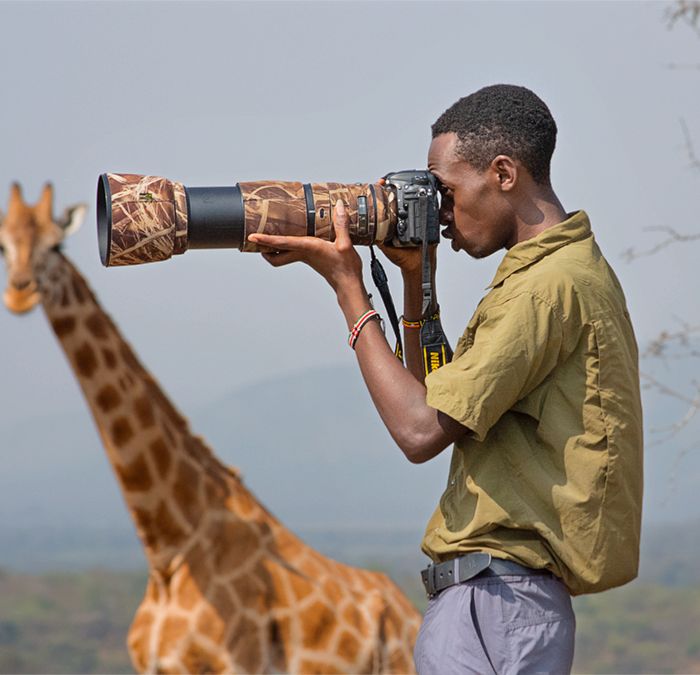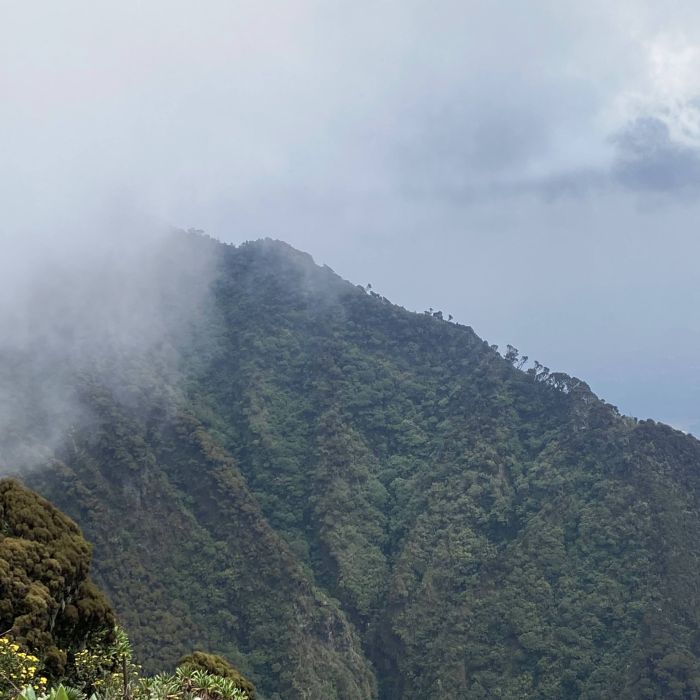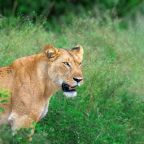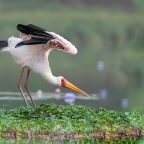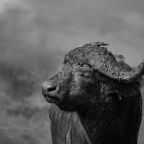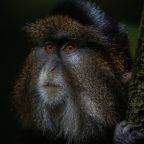Gorilla trekking in Uganda is an extraordinary adventure that brings you face-to-face with the endangered mountain gorillas in their natural habitat. Whether you choose to trek in Bwindi Impenetrable National Park or Mgahinga Gorilla National Park, you must be well-prepared for the rugged terrain, thick forests, and unpredictable weather conditions. One of the most crucial aspects of your preparation is knowing what to wear for gorilla trekking in Uganda to ensure comfort, safety, and a successful trekking experience.
This guide will walk you through the essential clothing and gear required for trekking the gorillas, explaining why each item is necessary and how it enhances your trekking adventure with Hillary Uganda Trips
1. Long-Sleeved Shirts – Protection from Scratches and Insects
Wearing a long-sleeved shirt is highly recommended for gorilla trekking because it provides essential protection against the dense vegetation, thorny bushes, and biting insects. As you navigate through Bwindi’s impenetrable forest or the bamboo forests of Mgahinga, you will encounter stinging nettles, hanging branches, and thick undergrowth, which can cause skin irritation or minor cuts.
Opt for a lightweight, moisture-wicking, and breathable fabric such as:
- Synthetic materials (quick-dry and sweat-resistant)
- Merino wool (Odor-resistant and temperature-regulating)
- Convertible shirts (with roll-up sleeves for versatility)
A neutral or earth-toned colour (such as green, brown, or khaki) is best for blending into the environment while avoiding attracting unwanted insects.
2. Long Trousers – Essential for Comfort and Protection
Just like long-sleeved shirts, long trousers are crucial for protecting your legs from insect bites, scratches, and harsh terrain. The trails through which trekking gorillas are walked can be muddy, slippery, and filled with dense vegetation, so choosing the right type of pants is essential.
Best Trousers for Gorilla Trekking
- Hiking pants with zip-off legs – Convertible into shorts if needed
- Lightweight and breathable fabrics – Reduces discomfort in humid conditions
- Water-resistant and quick-dry materials – Helps in case of rain or mud
- Stretchable fabric – Provides flexibility for climbing over roots and rocks
Avoid jeans or heavy cotton pants, as they absorb moisture quickly and become uncomfortable when wet.
3. Waterproof Hiking Boots – A must-have for Trekking
The terrain in Bwindi Impenetrable Forest and Mgahinga Gorilla National Park is uneven, with steep slopes, muddy trails, and dense vegetation. A pair of sturdy waterproof hiking boots is essential to provide:
- Ankle support – Prevents injuries on rough terrain
- Good grip and traction – Reduce the risk of slipping
- Comfort for long walks – Ensures endurance throughout the trek
- Waterproof protection – Keeps feet dry in case of rain or mud
Recommended Features for Gorilla Trekking Boots
- Rubber soles with deep treads – Provides stability on slippery trails
- Lightweight yet durable material – Reduces fatigue
- Breathable and waterproof design – Keeps feet dry and comfortable
- Well-fitted and broken-in boots – Prevents blisters and discomfort
Tip: Wear thick, moisture-wicking socks to prevent blisters and keep your feet dry during the trek.
4. Gaiters – Extra Protection for Your Feet and Legs
Gaiters are protective coverings worn over your hiking boots and lower legs to prevent mud, water, and insects from getting into your shoes. They are particularly useful in rainy seasons, when the trails become extra muddy and slippery.
Gaiters also provide additional protection from:
- Stinging insects such as safari ants
- Sharp twigs and thorns
- Mud and debris entering your boots
If you are trekking during Uganda’s wet season (March–May, October–November), gaiters are highly recommended.
5. Rain Jacket or Poncho – Be Prepared for Rain
The forests of Uganda receive rainfall throughout the year, making a lightweight waterproof jacket or poncho a must-have while trekking gorillas. Even during the dry season, sudden downpours can occur due to the high-altitude rainforest climate.
Choosing the Right Rain Gear
- Waterproof and breathable – Prevents overheating while keeping you dry
- Lightweight and packable – Easy to carry in a backpack
- Hooded design – Provides extra protection for your head and face
A poncho is an alternative option that covers both your body and backpack, keeping you completely dry.
6. A Wide-Brimmed Hat or Cap – Protection from Sun and Rain
A hat or cap is useful for shielding your face and neck from direct sun exposure, especially when trekking through open areas of the park. It also helps in light rain conditions by preventing water from dripping onto your face.
Best Hats for Gorilla Trekking
- A wide-brimmed safari hat – Offers all-around sun protection
- A lightweight, moisture-wicking cap – Good for absorbing sweat
- A hat with a neck flap – Extra protection against sunburn
For added comfort, choose a hat with an adjustable strap to keep it secure even when walking through windy conditions.
7. Hiking Gloves – Protect Your Hands from Scratches
Many trekkers overlook gloves, but they are extremely useful during gorilla trekking. Since the trek involves grabbing onto trees, vines, and branches for support, wearing gardening gloves or lightweight hiking gloves helps protect your hands from:
- Sharp branches and thorny plants
- Insect bites and stings
- Dirt and rough surfaces
Choose breathable, flexible gloves that offer both protection and grip.
8. Sunglasses – Eye Protection from Sunlight and Debris
Sunglasses with UV protection are useful for shielding your eyes from harsh sunlight, dust, and falling leaves as you trek through the forest. Opt for:
- Polarized lenses – Reduces glare and enhances visibility
- Wrap-around designs – Prevents dust and debris from entering your eyes
- Lightweight and shatterproof materials – Ensures durability during hiking
9. A Small Backpack – For Carrying Essentials
A lightweight waterproof backpack is essential for carrying important trekking items such as:
- Water bottles (at least 2 litres)
- Snacks or energy bars
- Camera and extra batteries
- Rain jacket or poncho
- Sunscreen and insect repellent
- First aid kit
Choose a backpack with adjustable padded straps for comfort and multiple compartments for better organization.
10. Layered Clothing – Adapt to Changing Temperatures
The climate in Bwindi and Mgahinga can be cool in the morning and evening, but humid during the trek. Wearing layered clothing allows you to adjust your outfit based on temperature changes.
A good layering system includes:
- A moisture-wicking base layer (to keep sweat off your body)
- A lightweight fleece or insulated jacket (for warmth in the morning)
- A waterproof outer layer (for rain protection)
Avoid cotton as it absorbs moisture and takes longer to dry.
11. Camera Gear & Equipment
Whether you’re a professional or an enthusiast, packing wisely will ensure you leave with incredible memories preserved in high-quality images.
To make this experience even more enriching, Hillary, a local professional photographer, will accompany these treks, offering valuable insights into photography basics and helping you capture your moments with expertise.
Must-Have Camera Gear for Gorilla Trekking
Camera Body
Bringing a DSLR or mirrorless camera is highly recommended for its superior image quality, dynamic range, and versatility. Some of the best options include:
- Canon EOS R5 or Canon 5D Mark IV or any Canon body (for Canon users)
- Nikon Z9 or Nikon D850 or any (for Nikon users)
- Sony A7R IV or Sony A1 or any(for Sony users)
A mirrorless camera is preferable for its lighter weight, which is crucial when trekking for several hours.
Lenses for Gorilla Photography
Selecting the right lens is crucial for capturing sharp, detailed images in Uganda’s misty and dimly lit forests. A telephoto zoom lens is highly recommended:
- 70-200mm f/2.8 – Ideal for capturing gorillas from a distance while maintaining sharp details.
- 100-400mm – Offers greater zoom, allowing you to frame close-ups while keeping a safe distance.
- 24-70mm f/2.8 – A great option for wide-angle shots of the jungle and trekking experience.
Since gorillas often move quickly, a lens with fast autofocus and image stabilization is ideal. I recommend a 24-70mm as it allows in enough light in low light situations.
Tripod or Monopod
While a tripod might be cumbersome for a trek, a monopod is an excellent alternative. It provides stability, helps reduce camera shake, and is easier to carry. A compact carbon fibre monopod is lightweight and sturdy enough for uneven forest terrain.
Extra Batteries and Memory Cards
The humid and cold conditions in the jungle can drain your battery life faster than expected. Always pack:
- At least 2–3 extra batteries
- High-speed memory cards (32GB, 64GB or 128GB UHS-II cards) to avoid running out of storage during the trek.
Waterproof Camera Bag
Gorilla trekking involves navigating through misty and sometimes rainy conditions. A weather-sealed camera bag or dry bag will protect your gear from moisture and unexpected rain showers. Look for a bag with comfortable straps for long treks.
Rain Covers for Camera & Lens
Uganda’s forests have unpredictable weather, and a rain cover will shield your camera and lens from moisture. Opt for lightweight, transparent covers to maintain visibility while adjusting your settings.
Lens Cleaning Kit
Humidity can cause condensation, and dust or water droplets may affect your lens. Carry a microfiber cloth, lens wipes, and an air blower to keep your lens clean throughout the trek.
Polarizing and UV Filters
A polarizing filter helps reduce glare from leaves and enhances contrast, making your jungle photos more vibrant. A UV filter protects your lens from dust and accidental scratches.
Additional Photography Tips from Hillary
Hillary, a professional local photographer, will be part of these treks, sharing key photography tips, such as:
- Understanding natural light in dense forests
- Mastering gorilla composition techniques
- Using fast shutter speeds to capture movement
- Adjusting ISO settings for low-light conditions
- Ensuring ethical wildlife photography without disturbing gorillas
With his expertise, you can enhance your photography skills while fully immersing yourself in the beauty of Uganda’s wildlife.
Want to Feel Like a Local? Send me a WhatsApp message, and we can plan your experience to meet your desired option!
A gorilla trekking safari is more than just a wildlife experience but about embracing local culture and authenticity. If you want to customize your trip, connect with locals, and make your journey truly unique, let’s plan it together!
Be well prepared for Gorilla Trekking in Uganda
Dressing appropriately for gorilla trekking in Uganda is crucial for ensuring comfort, safety, and an enjoyable experience. With the right clothing and gear, you will be well-prepared to navigate the challenging terrain, endure varying weather conditions, and fully enjoy your encounter with the magnificent mountain gorillas.
By following this comprehensive packing guide, you will enhance your experience with gorillas through Hillary Uganda Trips while ensuring that you stay comfortable and protected throughout the journey.



